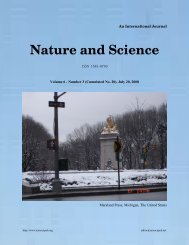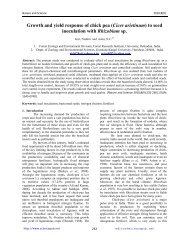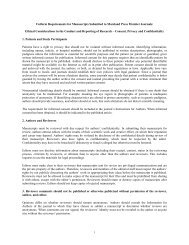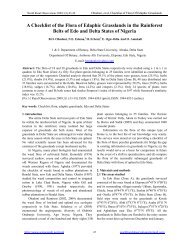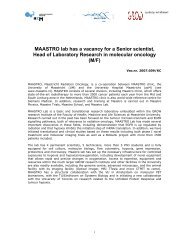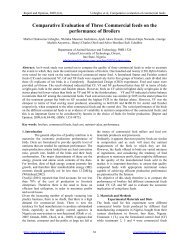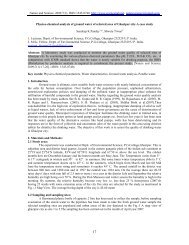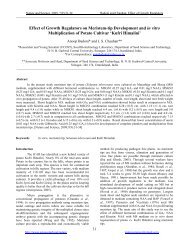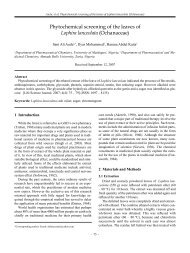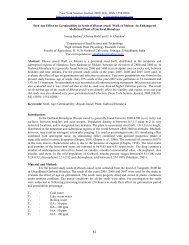Ecological, Social and Commercial Role of Lichens in India with ...
Ecological, Social and Commercial Role of Lichens in India with ...
Ecological, Social and Commercial Role of Lichens in India with ...
You also want an ePaper? Increase the reach of your titles
YUMPU automatically turns print PDFs into web optimized ePapers that Google loves.
Acdemia Arena 2010, Supplement 0201<br />
http://www.sciencepub.net<br />
Chapter-8<br />
AN ACCOUNT OF LICHENS ON FALLEN TWIGS OF THREE<br />
QUERCUS SPECIES IN CHOPTA FOREST OF GARHWAL<br />
HIMALAYAS, INDIA<br />
BALWANT KUMAR* AND DALIP K. UPRETI**<br />
*Center for <strong>Ecological</strong> Studies, Appropriate Technology <strong>India</strong>, Ukhimath (Garhwal)<br />
Uttarakh<strong>and</strong>, <strong>India</strong><br />
**National Botanical Research Institute, Rana Pratap Marg, Lucknow-226001, Uttar Pradesh, <strong>India</strong><br />
ABSTRACT<br />
The association <strong>of</strong> epiphytic lichens on the fallen twig <strong>of</strong> three common Quercus species<br />
viz. Quercus semecarpifolia, Q. floribunda <strong>and</strong> Quercus leucotrichophora from the moist<br />
temperate forest <strong>of</strong> Chopta region, Rudraprayag district <strong>of</strong> Garhwal Himalayas has been discussed.<br />
Q. semecarpifolia exhibits the maximum growth <strong>of</strong> lichens on its twigs represented by 29 species<br />
followed by Q. floribunda <strong>and</strong> Q. leucotrichophora <strong>with</strong> 16 <strong>and</strong> 12 species respectively. The twigs<br />
<strong>of</strong> diameter classes more than 4.1 cm <strong>in</strong> Q. semecarpifolia <strong>and</strong> Q. floribunda bears the maximum<br />
<strong>in</strong>dividuals <strong>of</strong> lichens represented by 148 <strong>and</strong> 71, while Q. leucotrichophora the twigs 3.1-4.0<br />
diameter class exhibit maximum 82 <strong>in</strong>dividuals. All the three oak species exhibit luxuriant growth<br />
<strong>of</strong> Parmelioid lichens on their twigs.<br />
Key words <strong>Lichens</strong>, fallen twigs, Quercus spp., Chopta, Uttarakh<strong>and</strong>.<br />
Introduction<br />
<strong>Lichens</strong> <strong>in</strong> <strong>India</strong> are collected from the temperature regions <strong>of</strong> Himalayas <strong>and</strong> used<br />
<strong>in</strong>digenously for preparation <strong>of</strong> perfumes, dyes, <strong>and</strong> condiments. Approximately 750 metric tones<br />
(MT) <strong>of</strong> lichens are collected from Uttarakh<strong>and</strong> hills, 800 MT are imported from other regions <strong>of</strong><br />
<strong>India</strong>, <strong>in</strong>clud<strong>in</strong>g Himachal Pradesh, Sikkim <strong>and</strong> Assam <strong>and</strong> out <strong>of</strong> which about 50-80 MT are<br />
exported (Shah, 1997). In Nepal <strong>and</strong> adjo<strong>in</strong><strong>in</strong>g areas <strong>of</strong> <strong>India</strong>, 320 MT <strong>of</strong> lichens are utilized<br />
annually for different purposes (Moxham, 1986). The lichens are picked up by h<strong>and</strong> from the<br />
79



